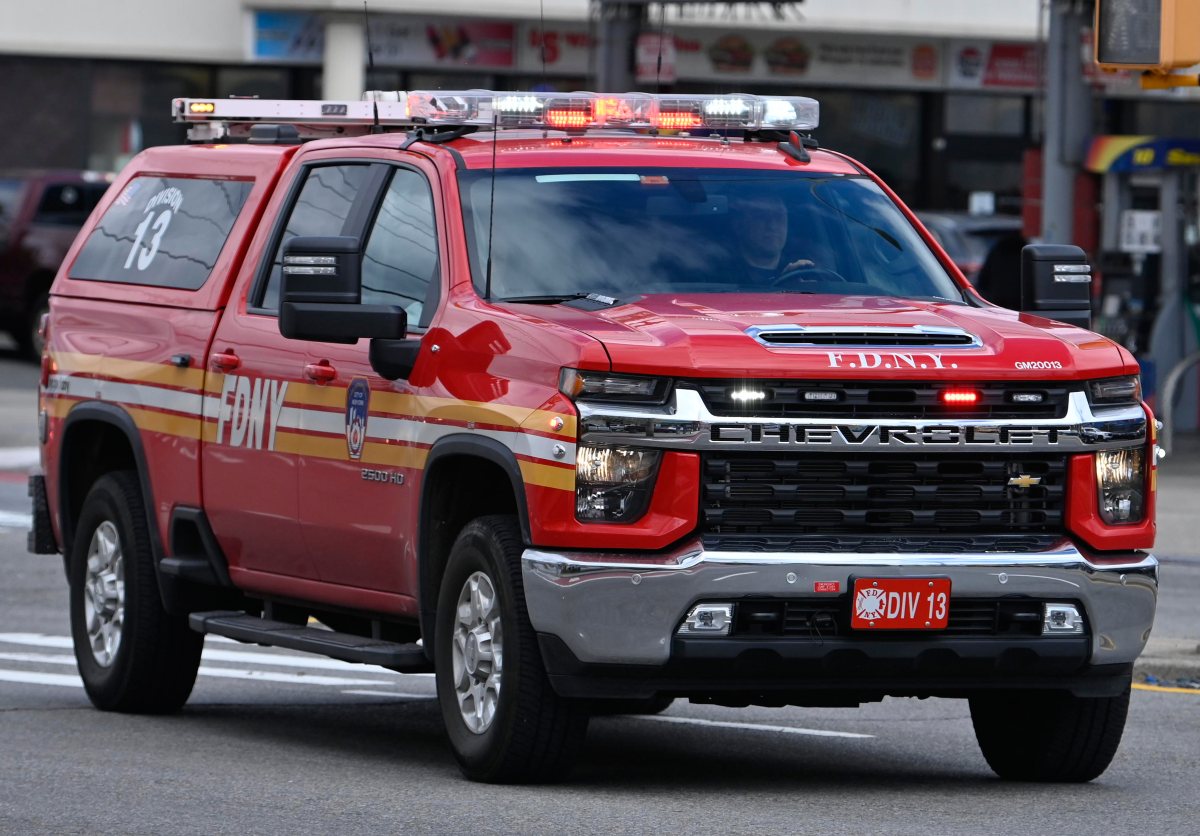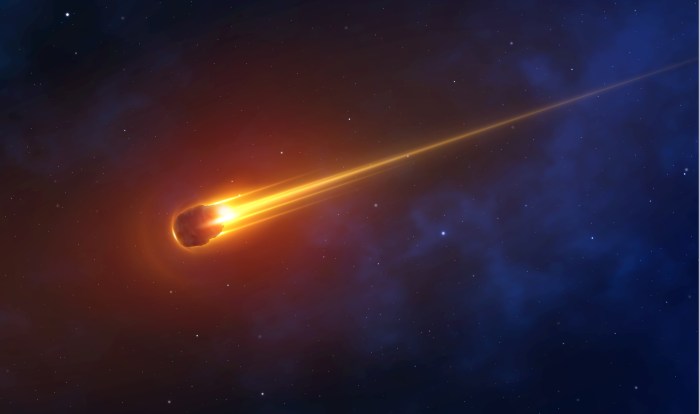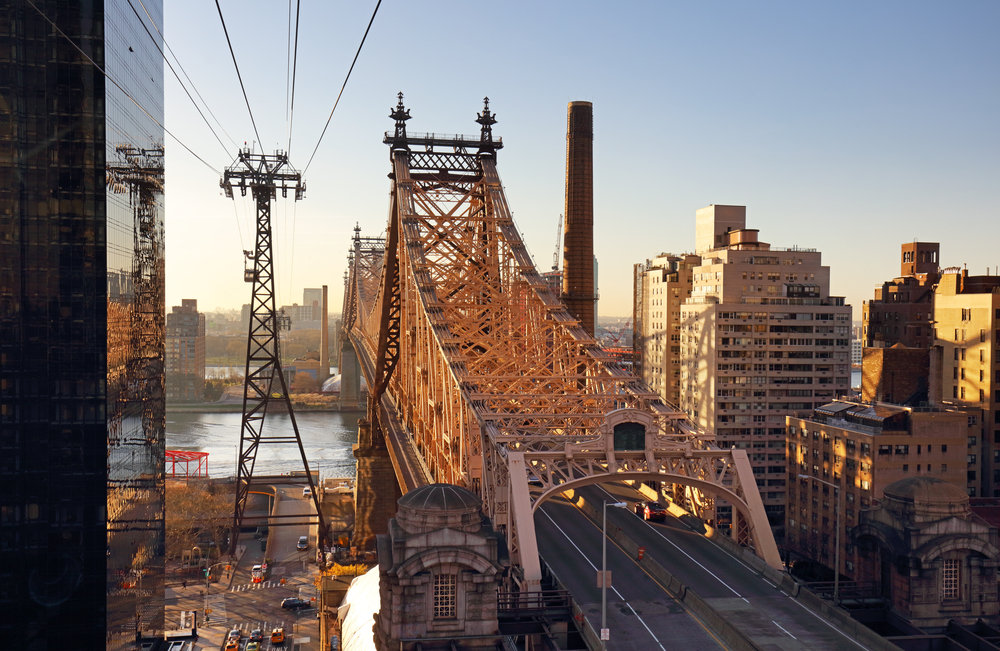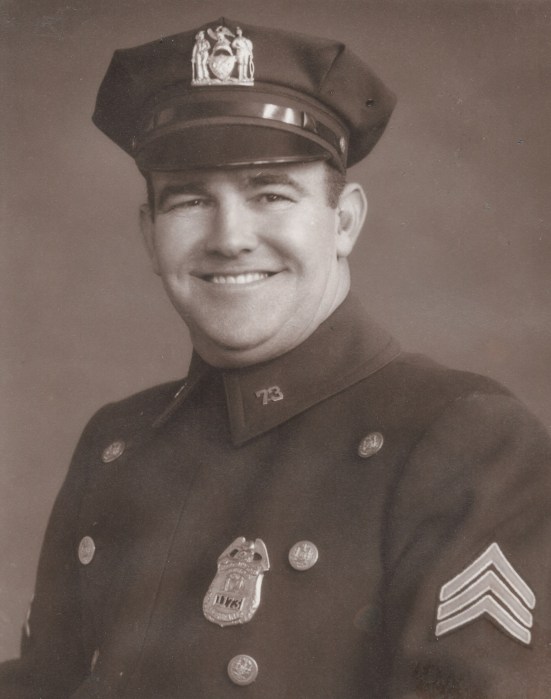Alright, that’s enough now!
The New Jersey earthquake that shook and stirred New York City on Friday morning continues to keep the city on edge with a 4.0 aftershock reported Friday evening.
The U.S. Geological Survey reported a 4.0 “notable quake” originating in Gladstone, NJ, at 6 p.m. on April 5, some 6 hours after a reported 4.8 magnitude earthquake occurred at about 10:28 a.m. April 5 about 3 miles north of Lebanon, NJ. Both towns are located in close proximity to one another, about 60 miles west of New York City, along the Ramapo Fault.
Following the tremor, the USGS reported numerous 10 aftershocks of no greater than 2.2. The Gladstone aftershock was the strongest yet, and already rattled New Yorkers quickly took notice.
The city’s Emergency Management office posted on X, formerly known as Twitter, that it felt the latest aftershock in its Downtown Brooklyn headquarters.
“We experienced shaking in our facility and are confirming with USGS on whether an earthquake aftershock has occurred and we are continuing with our earthquake protocols,” the office posted. “Please contact 911 if you experience any life safety issues & 311 to report damage.”
The office further advised residents to stay indoors at this time, and to report any injuries to 911.
Following the evening’s aftershock, Gov. Kathy Hochul posted on X that “we are continuing to review critical infrastructure and there are no reports of significant damage at this time.”
The morning quake in NYC
No major damage was reported from the Friday morning earthquake, which was felt throughout the tri-state area, with some folks reporting continuous shaking for up to 10 seconds.
Cellphone service was interrupted, most likely due to too many calls going through at once. Alerts went out to most cellphone users about 20 minutes after the tremor hit, as many New Yorkers pointed out on social media. Zach Iscol, Commissioner of New York City Emergency Management, told reporters that Notify NYC getting the message out in 20 minutes is “pretty fast,” with NYPD Commissioner Edward Caban noting an uptick in 911 and 311 around 10:30 a.m. and that has since calmed down to normal levels.
“I think 20 minutes time to target is pretty fast for public notification. First off, there’s a lot of work we have to do to make sure we’re getting confirmation from USGS that this was actually an earthquake,” said Iscol. “There’s a lot of things that can cause buildings to shake, too. We also need to make sure we’re putting out the proper guidance there. Twenty minutes is very, very fast for a public notification.”
Those who felt the earthquake are encouraged to submit a report to https://earthquake.usgs.gov/

The city’s response
NYC Emergency Management said in a statement on X, “If you are in danger, please dial 911. To report non-emergency issues please call 311. Communicate your status so others know you’re okay. Text messages are more likely to go through when phone lines are busy. Check on your neighbors if safe to do so.”
Mayor Eric Adams reported no major infrastructure damage or injuries related to the earthquake, and also told New Yorkers to drop to the floor and cover backs and necks if there are aftershocks. He advised New Yorkers to “go about their normal day” during a news briefing at the city Office of Emergency Management headquarters in Brooklyn.
“All of us felt in some way or another the earthquake that hit our city around 10:23 a.m.,” Adams said. “As you know this is a developing situation where you’re always concerned about aftershocks after an earthquake.”
Adams said his administration is in touch with the White House, the governor’s office and local elected officials. He also encouraged New Yorkers to check on their loved ones.
“Earthquakes don’t happen every day in New York,” he said. “This can be extremely traumatic the number of texts, calls and inquires people sent out not only to our administration but to family members checking on them, we know how this can impact you.”
Iscol said people should call 311 to report any home damage. MTA CEO Janno Lieber noted that the transit system has continued to operate safely, and inspections of all stations and bridges MTA operates have been conducted.
The city’s public schools are still open. Nathaniel Styer, a Department of Education spokesperson, said on X that the agency’s “building response teams have assembled out of an abundance of caution, & we are working closely with our agency partners, including [the city’s Emergency Management department] to ensure all of our students and staff are safe.”
New York City Schools chancellor David C. Banks told reporters that all students are safe, and there were no reports of injuries/school building damage. Principals have been instructed to continue the school day as normal. After-school programs are continuing as planned, and Banks said that parents don’t have to pick up kids from school early.
Buildings Commissioner Jimmy Oddo said that the DOB has not gotten an influx of calls about damage, and the construction enforcement unit is out doing inspections similar to what they conduct before storms. Oddo warned construction professionals to check their sites and report any troublesome signs. There is also some concern about “downstream possibilities” like cracks that may materialize over the next month.
The earthquake happened several hours before the Yankees’ home opener in the Bronx; the game remains on schedule.
Alternate-side parking is still in effect for April 5.
It’s the second time this year that New York City was rattled by an earthquake. In January, a 1.7 tremor hit near Roosevelt Island – knocking out generators there.
The tremor also occurred just three days before the total solar eclipse across North America, during which New York City will see 90% of the sun blocked during the afternoon of Monday, April 8.
Concerns about aftershocks
As for air travel, the local airports stayed in operation but flights were on a ground stop following the morning quake in case of aftershocks at JFK and Newark Airports, according to Hochul; both the JFK and Newark AirTrains were suspended in order for crews to check for structural damage.
Hochul also expressed concerns about the potential for aftershocks, and asked New Yorkers to be “particularly vigilant” for any which may occur.
“These are emerging situations,” the governor said at a Friday morning briefing. “It could be over, but also there could be another effect, and we have to be prepared for that.”
Sure enough, the aftershock happened at about 6 p.m., about 7 kilometers southwest of Gladstone, NJ. The USGS says the 4.0 tremor was 9.4 kilometers below the surface, more than twice the depth of the morning quake. Preliminary reports indicated that people as far south as Baltimore, MD and as far north as Springfield, MA could feel it.
After the morning earthquake, the U.S. Geological Survey estimated a 46% chance of aftershocks of a magnitude of 3.0 on the Richter scale or higher following the Lebanon earthquake over the next week — and a 3% chance of aftershocks ranging higher than 5.0. Typically, aftershocks are of a less severity than the original quake.
In the unlikely event of an aftershock stronger than this quake, you are advised to immediately practice the drop-cover-hold on method as outlined by the Centers for Disease Control and Prevention:
- DROP to your hands and knees;
- COVER your head and neck under a sturdy table or desk (if there is no shelter nearby, move toward an interior wall or next to low-lying furniture that won’t fall on you);
- HOLD ON to your shelter (or your head and neck) until the shaking stops, and be prepared to move with your shelter if things shift.
Infrequent history of earthquakes
Friday’s earthquake, according to the U.S. Geological Survey, occurred about 4.7 kilometers below the surface in the area of Lebanon, NJ. More than 150,000 people, as of 12:51 p.m. April 5, reported feeling its effects.
The location is along the Ramapo Fault, which runs along the western border of the Appalachian Mountains from the Lower Hudson Valley in New York through New Jersey and into southeastern Pennsylvania. Two other smaller fault lines run adjacent to it in central New Jersey.
The Ramapo Fault is considered one of the most geologically active in the eastern United States, and has produced in recent years minor tremors infrequently. Friday’s earthquake was the largest to hit New Jersey since 1783, two years after the end of the American Revolution, according to the Bergen Record.
Earthquakes in New York are quite few and far between. According to Cornell University, earthquakes around the Empire State generally occur in areas well north of New York City, with the strongest having taken place in the Adirondack Mountains.
Moving fault lines below the surface cause earthquakes. New York City sits atop several fault lines that are not as notoriously active as in places like California. As NY1 pointed out in a 2018 report, four of the city’s fault lines traverse parts of Manhattan and the Bronx: the 125th Street Fault in Harlem, the Dyckman Street Fault in Inwood, the Mosholu Parkway Fault in the Bronx; and the East River Fault.
Friday’s earthquake was the strongest tremor to impact New York since August 2011, when a quake in Virginia sent shockwaves hundreds of miles north to New York, and up and down the Eastern Seaboard. That event caused little reported damage, but rattled plenty of New Yorkers, forcing brief evacuations of City Hall and the New York Stock Exchange.
Public reactions
Around Central Harlem, residents were shocked to feel the sudden movement caused by the quake. Norma Laracuente, a home health aide in the neighborhood, was working at the St. Nicholas houses when the quake happened. She found out it was an earthquake when she turned on the news.
“I had no clue. Everything was shaking. I thought it was a truck at first, but then I felt everything moving and I said, ‘no, this is not right,'” said Laracuente.
Sheila Harrison, a detox rehab employee in the neighborhood, was on her way to attend a protest banning illegal smoke shops in her neighborhood when people asked her, “You know there was an earthquake?”
“I was in my house, my TV on the wall shook, I thought it was something in the wall,” said Harrison. “But to me, I have neighbors that are really loud. But I wasn’t scared because there’s so much going on in the world right now. I think it’s a sign from God to get us on the right side.”
After experiencing a power outage just a few months ago, Harrison became prepared.
“I started buying batteries, rations like the people in the army get, I’m buying candles, I got a generator, I got my first aid kit, I made sure to stock up on water,” she said.
Tanesha Grant, executive director of Parents Supporting Parents, told amNewYork Metro, “Yes! My whole house was shaking. I was like, oh my god it’s an earthquake.”
This is a developing story. Check back for updates.
Read more: Mayor Adams Stands Firm: Migrant Meal Funding Pilot

































